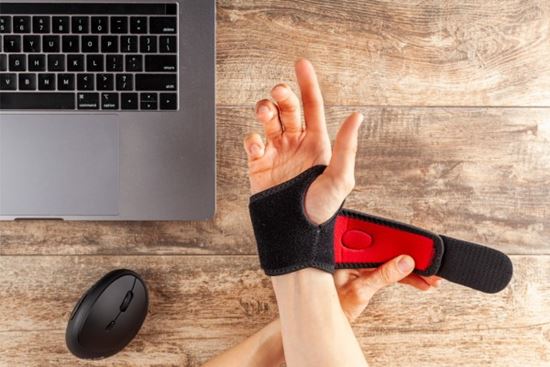-
Home
-
Carpal Tunnel Hand Braces: An Overview
Carpal Tunnel Hand Braces: An Overview
November 22, 2023
 Carpal tunnel syndrome (CTS) is a common condition that affects the hand and wrist, causing numbness, tingling, and pain. This condition usually develops when the median nerve that runs through the wrist is compressed. Fortunately, carpal tunnel hand braces are an effective way to manage this condition. In this blog, we will discuss all you need to know about carpal tunnel hand braces, including the best types of braces, how to wear them, and their benefits.
Carpal tunnel syndrome (CTS) is a common condition that affects the hand and wrist, causing numbness, tingling, and pain. This condition usually develops when the median nerve that runs through the wrist is compressed. Fortunately, carpal tunnel hand braces are an effective way to manage this condition. In this blog, we will discuss all you need to know about carpal tunnel hand braces, including the best types of braces, how to wear them, and their benefits.
How Does a Carpal Tunnel Brace Work?
Carpal tunnel hand braces work by keeping the wrist in a neutral position, which means it is straight and not bent in either direction. This is especially helpful at night, as many people tend to bend their wrists while sleeping. When the wrist is in a neutral position, it reduces pressure on the median nerve, relieving carpal tunnel syndrome symptoms.
Benefits of Carpal Tunnel Hand Braces
The goal of wearing a carpal tunnel brace is to provide support while limiting wrist movement to alleviate pressure on the median nerve. Other benefits of wearing a carpal tunnel brace include pain relief, improved function, and damage prevention.
- Pain relief: A hand brace can help alleviate pain and discomfort associated with CTS, allowing you to carry on with your daily activities.
- Improved function: A brace supports the wrist and hand, improving grip strength, dexterity, and overall function.
- Preventing further damage: If you wear a hand brace early and often, you can prevent further damage to the median nerve and avoid the need for surgery.
Types of Carpal Tunnel Hand Braces
There are different types of hand and wrist braces for CTS, and your choice depends on your individual needs, preferences, and medical advice. Some of the common types include wrist splints, wrist supports, and thumb spicas.
- Wrist splints are rigid braces that immobilize the wrist and hand, preventing them from moving during sleep or rest.
- Wrist supports are flexible braces that provide support and compression to the wrist, allowing some movement while still reducing pressure on the median nerve.
- Thumb spicas are specialized braces that immobilize the thumb and wrist for additional support.
Fitting and Use of Carpal Tunnel Hand Braces
It's crucial to get the right fit for your hand brace to provide maximum support and comfort. Here are some tips on fitting and using your brace:
- Consult a healthcare professional: Seek advice from a doctor, nurse, or occupational therapist to determine the right brace size, type, and usage.
- Wear it correctly: Follow the instructions for wearing and adjusting your brace to ensure proper positioning and support.
- Use it consistently: Wear your brace for the recommended duration, usually during sleep, rest, or activities that aggravate CTS symptoms.
- Clean it regularly: To ensure your hand brace lasts longer and maintains its effectiveness, wipe it with a damp cloth or mild soap and water solution to remove dirt and sweat. Air dry or use a clean towel to dry your brace thoroughly before wearing it again.
Carpal tunnel hand braces offer a non-invasive, effective, and affordable way of managing and preventing CTS. By providing support, compression, and immobilization, these braces can relieve pain, improve function, and prevent further damage to the median nerve. By choosing the right brace, utilizing it properly, and avoiding activities that can exacerbate the condition, you can regain control over your symptoms and day-to-day life. If you are unsure which carpal tunnel brace is right for you, talk to your doctor or physical therapist for recommendations.